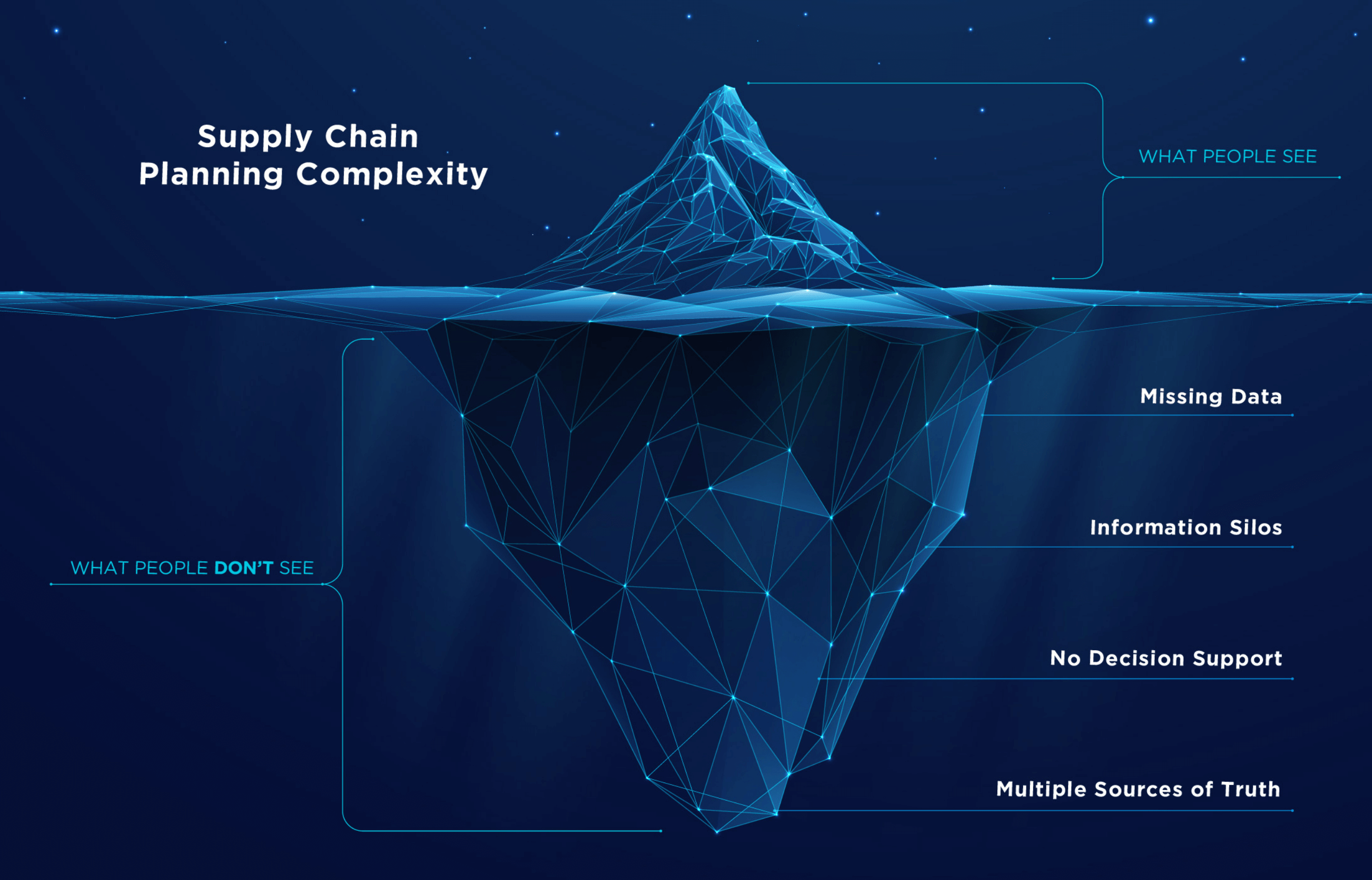Supply Chain Planning: Was My Metals Production Boss Right?
Is supply chain planning in metals simply the replacement of surprises with errors?
As a young engineer in the planning department of a metals company, I was eager to make solid plans and apply what I had learned at university. But, I had a tough time, and it was almost impossible to persuade my production colleagues that plans were necessary and beneficial.
The boss of production was the worst. He ignored my plans and sometimes even ridiculed them, saying they were unimportant and impossible to execute. Longer discussions often ended with one of his famous quotes “Planning in metals is simply the replacement of surprises with errors”.
Basically, he believed that metals production is too complex to plan. You can’t avoid surprises, so you may as well live with them because you will only get planning errors anyway.
He wasn’t exactly wrong then, but what about now?
It’s true that producing metals is complex and often leads to unexpected outcomes. Ensuring the right quality requires all production parameters to be accurate, or you risk creating waste, costly reworks and/or deviating from the plan.
Additionally, the usual longer routes, demand for unique products, and the excessive costs of maintaining buffer inventory, create a volatile planning cocktail, making surprises likely. Without a plan, surprises are inevitable, but even with a plan, errors can occur. However, this can’t be the only explanation or excuse as to why planning in metals may seem futile.
Even though I’m no longer a young engineer, this quote often comes to mind when I reflect on conversations with customers and colleagues in the industry. There has been progress in planning but making realistic plans remains a tough challenge. Why are metal manufacturers still struggling with planning their operations? Why does it seem like planning is more straightforward, less complex in other sectors?
Having worked with many customers over the last few decades, I’ve seen first-hand that you can produce effective, executable plans, and better manage surprises. Even in a changing landscape and despite the production complexity organizations are facing right now. Plans might not always be perfect, but it is possible to keep errors to a minimum. Surely, it’s better to replace surprises with manageable risks?
Production complexity is just the tip of the iceberg

A summary with bullet points doesn’t do justice to the hard work, expertise, and effort of planning departments to keep the train on track. It’s not easy, and it can be a thankless job. Despite their best efforts, planners are often blamed when things don’t go well. With so many aspects of the operations outside their span of control, there’s more to this than meets the eye. Complexity in production is just the tip of the iceberg. There are other challenges at play. Let’s dive into the four most common issues and how to solve them:
- Siloed planning and a lack of integrated planning
- Multiple sources of truth and the absence of transparency
- Suboptimal planning without all the pieces of the puzzle
- A need for speed but insufficient tools and decision support
Siloed planning and lack of integrated planning
Silos have their place, but not in planning. Too often, we still see planning activities spread across different departments. Each department can and should have a certain degree of freedom when solving their planning puzzles to enable them to do their jobs well. But a lack of integration means changes made in one department, more often than not, create headaches elsewhere. This lack of integration can be horizontal, vertical, or both:
- Horizontal: Between departments across the supply chain, from metal buying to production planning to logistics.
- Vertical: Across planning horizons, from strategic to tactical planning and operational scheduling.
It’s clear that without integration, the planning orchestra struggles to play the same tune. The result? Mistakes and surprises are inevitable.
Multiple sources of truth and the absence of transparency
What I often see, is that planners have incorrect data, or they have more than one version of the truth. This is a critical challenge planners face. By nature, planning is about trying to control the future. All too often, essential information relating to supply or capacity is unavailable or little more than a best guess. It’s hard enough to have a clear picture of the current status of production. But it’s even harder to see the impact of planning decisions on later stages of the supply chain, causing unexpected outcomes for the next player or department in the chain.
Transparency at every stage of the production process is necessary to make good planning decisions and deal with surprises. Reality can change quickly, so planners need all the relevant information readily available so they can make the right decisions in a timely manner. To make this possible, all stakeholders need a single source. If each team relies on their own local tools or spreadsheets, you risk errors, and it means no-one has the current or full view. Information is incorrect or outdated and it’s impossible to see the impact of planning decisions.
Suboptimal plans without all the pieces of the puzzle
Planning is like doing a puzzle. In metals, it’s a complicated puzzle with many, many pieces. Solving a puzzle with missing pieces is not easy. It is possible, but it won’t give you the result that you hoped for. Conversely, have you ever tried to do a puzzle with too many pieces? I haven’t, but I imagine it would require a lot of patience, and even then, it may be too difficult to complete.
Planners face similar problems. Either the information to create an optimal plan is unavailable, or it’s simply too complex to consider all the constraints and parameters within the timescale available. We humans have our limits. The truth is that planners, despite their expertise and best efforts, still have to settle for a suboptimal plan. That’s because they don’t have the right tools. Best case? Missed financial opportunities. Worst case? Quality issues and costs.

A need for speed but insufficient tools and decision support
Ultimately, I must admit that with so many influencing factors, plans will inevitably be incorrect and often not go as anticipated. Good planning processes and tools help limit errors. But in the current climate, the ability to react fast to the inevitable changes in supply, capacity, and demand is what’s really required.
Reworking plans is hard. When it takes too long to, it’s easy to understand why planners may be reluctant to make updates – even when they see the changes coming. They’re not being unprofessional or lazy. In many cases, the time and effort required to revise plans, assess, approve, and share the outcomes feel like a waste, since the updated plan may arrive too late to make a difference.
Speed and response time are of the essence when you need to react to changes, whether it’s a change in demand midterm or an unplanned outage of critical equipment. When you can respond quickly and have the ability to simulate different scenarios, you’re prepared for any eventuality. A clear planning approach and a single source of truth are key requirements for adequate and fast reaction. If you want the planning soldiers to battle and win their daily challenges, you should provide them with tools that support them in making good decisions fast.
So, was my production boss right?
Back then, he might have been. But now? No, definitely not!
It is impossible to prevent disruptions and changes, but technology has evolved. There are tools and best practices available to prove that planning is not simply replacing surprises with errors.
Fully integrated planning is a coherent approach based on your strategy and your company goals. When you are a well-aligned organization with clear goals, using the right tools to communicate and share information, you get a grip on your planning. Full integration provides a single source of truth for all stakeholders. A planning solution that captures your unique rules and constraints and offers what-if scenario analysis empowers your planners. It gives them all the information and decision-support they need to manage complexity and create optimal plans fast when changes occur. It may be easier said than done, but based on my experience, it’s a surefire way to minimize downtime, gain efficiency and protect your margins.
If you feel that your planning is still about replacing surprises with errors, don’t despair. Solving puzzles and helping customers manage surprises is what we do. If you want to learn more about our Integrated Hybrid Planning approach and how we can help you prove my old production boss was wrong, the TLF-KWA advisory team is ready to assist you. (By the way, I like surprises, but I’d rather keep them for birthdays!)






